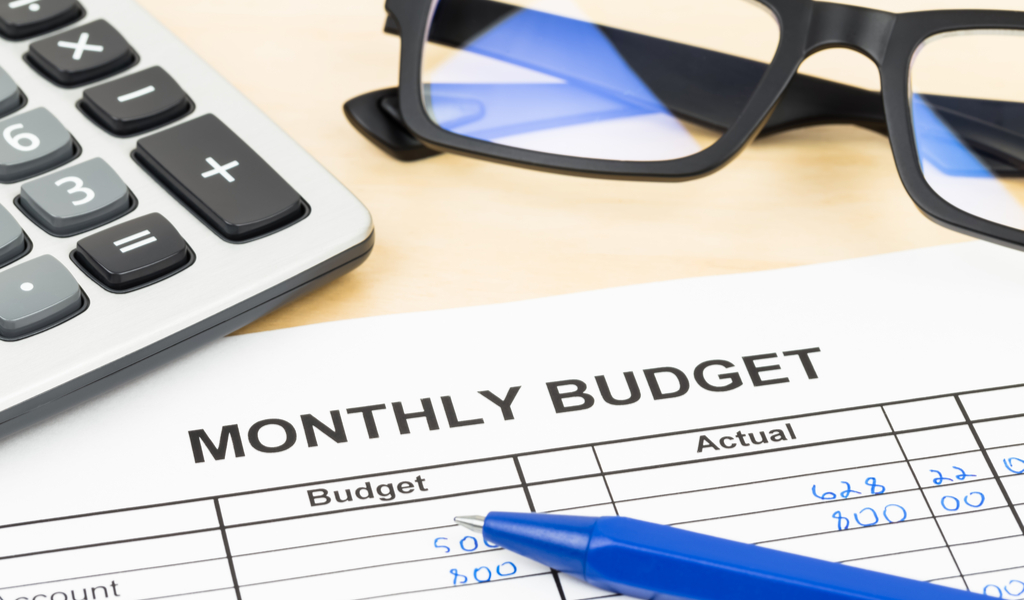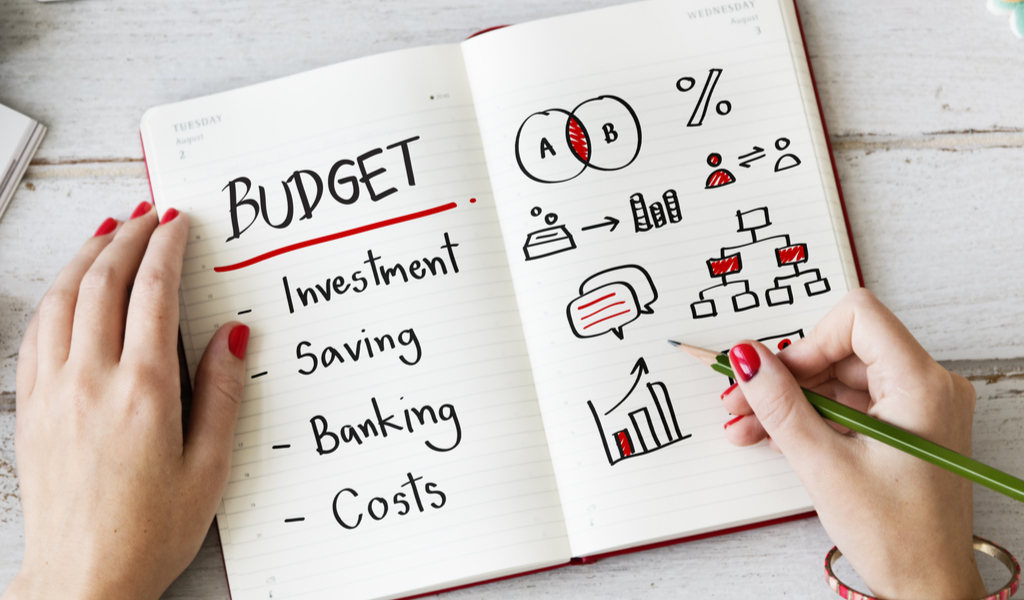For most people, life just seems to get more and more busy. The demands for our time pull us in many different directions and it can be difficult to focus our time and energy on important household matters, such as where we spend our money each month. The simple premise of any budget is to spend less money than what you bring in. There are authors out there who write entire books on the subject of budgeting, but it does not have to be that complicated, or require hours of dry reading. Here are 5 simple and effective ways to keep your monthly budget under control and be on your way to a more happy and stress free life…with more money to spend and tuck away into savings!
1. Create a monthly budget spreadsheet.
This will become the roadmap to getting your finances in order. Try to create one that spans the course of an entire year so that you can refer back to previous months with ease, and track the progress you make as you go.
The first section of the spreadsheet should be reserved for monthly bills that you have limited control over; things like rent or mortgage, utility bills, insurance, and all of the other necessary evils in your life. Once you have listed these bills out, create two columns next to each; one to document how much you plan to spend paying the bill and one to document what you actually ended up paying. Any extra funds from subtracting these two totals become bonus money!

Next, create a second section to list the bills that you do have control over, although, it may not feel that way sometimes! This section should be reserved for medical invoices, credit card bills, and any loans that you have. You can call this section the “light at the end of the tunnel” section, because you will eventually reach it using your spreadsheet! As with the first section, make two columns next to each listed item. In the first column, write down the amount you will pay on that bill each month and in the second column, write down the total you owe on that bill minus the payment that you make. The second column is the reward column because you get to watch the amount of debt decrease!
Last, but not least, is the spending money, savings, and income section. This is where life gets just a little more fun as it is the section with the net total you will have after paying your bills. During the first month, your heart rate may go up when you see the total, but just remember that things will improve. Over time the money in this section of the spreadsheet should increase as your bill totals go down. List your total income and then subtract the money spent on bills; you will now have a clear picture of what is left to put in savings and spend on things you need.
2. Track what you spend!
Have you ever opened your empty wallet only to wonder where all of your money went? It happens to everyone at one point and as long as you have not fallen victim to a pickpocketing incident, or have sneaky children who have pilfered lunch money from you, tracking your spending money is easy on…yes, you got it, another spreadsheet! For this spreadsheet, you just need to create columns with spending categories such as groceries, gas, restaurant dining, home decor, entertainment, and all of the other things your household spends money on. After you have created your categories, be honest with yourself and start keeping a running total of what you spend on each during the month. At the end of the month, some of the totals may be alarming and you will gain insight as to where you need to cut back ($200 spent on espressos, yikes!). For a fun family challenge, try to see if you can spend less in each category the following month!
3. Dig for savings!
Every year manufacturers circulate millions of dollars in coupons for consumers to hunt for and find. Coupons can save you a lot of money on products you purchase and make your monthly spending budget stretch further. If you can save an average of 50 cents per day, by using coupons for the products you buy, that is $182.50 back in your wallet over the course of an entire year! You do not have to make an entire career out of clipping coupons, as you see some people do on TV, but small savings here and there will add up to a lot of money over time.

4. Use cash, not plastic!
Sticking to your budget means to only use the cash you have available for spending. Credit card debt is one of the top financial issues that Americans face because it is easy to pull out a card to purchase something you would not be able to afford otherwise. It is time to put away your credit cards and only use them if there is an emergency. To make keeping track of your cash easy, create envelopes for things you need to buy and stuff each envelope accordingly. If there is extra cash in the envelope after making your monthly purchases, this money can then be transferred to a fund you may have fell short on, or you can stash it away in savings!
5. Understand your wants and needs.
A “need” is something that you have to have to function in life. Food, sanitary supplies, suitable clothes, and transportation are all considered things that you need. A “want” is something you wish to have, but your life is not going to be altered in any extreme way if you don’t have it. If you simply can’t afford to have the latest model cell phone, a designer purse, or top of the line clothes, then these items can go on your wish list and you can save up to buy them at a later date. When you are trying to live within a budget, it is important to know the difference between wants and needs.

Sticking to your monthly household budget can be quite simple as long as you have a plan of action in place. Start out by creating a spreadsheet so that you have a visual aid to plan with. After this, you can track your spending and see where there are opportunities to save. Then look for deals, use only the cash you have available to you, and understand what your wants and needs are in life.



